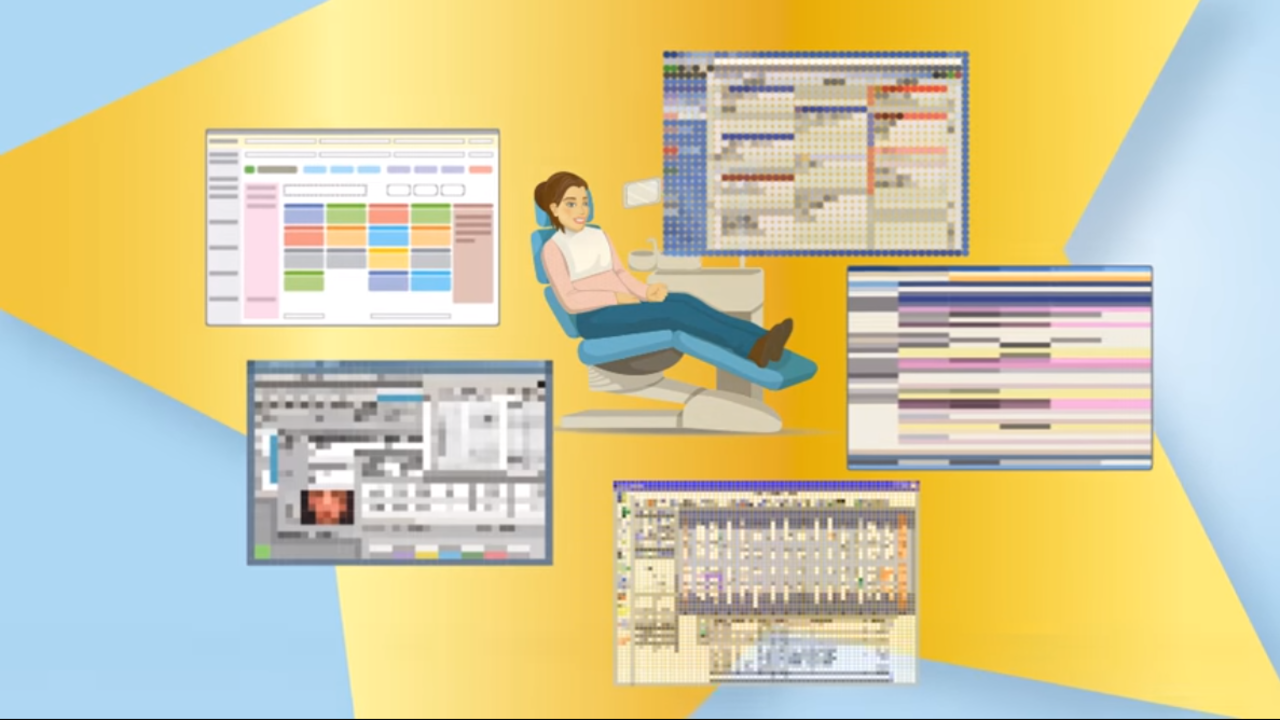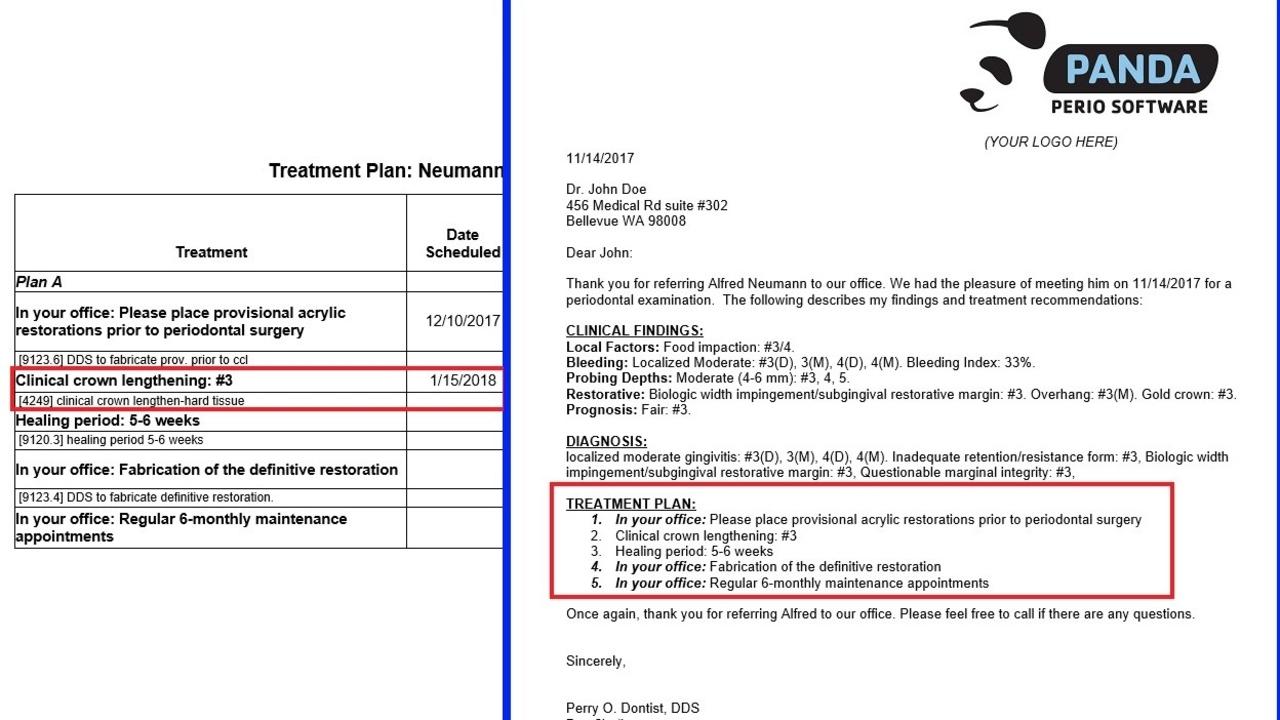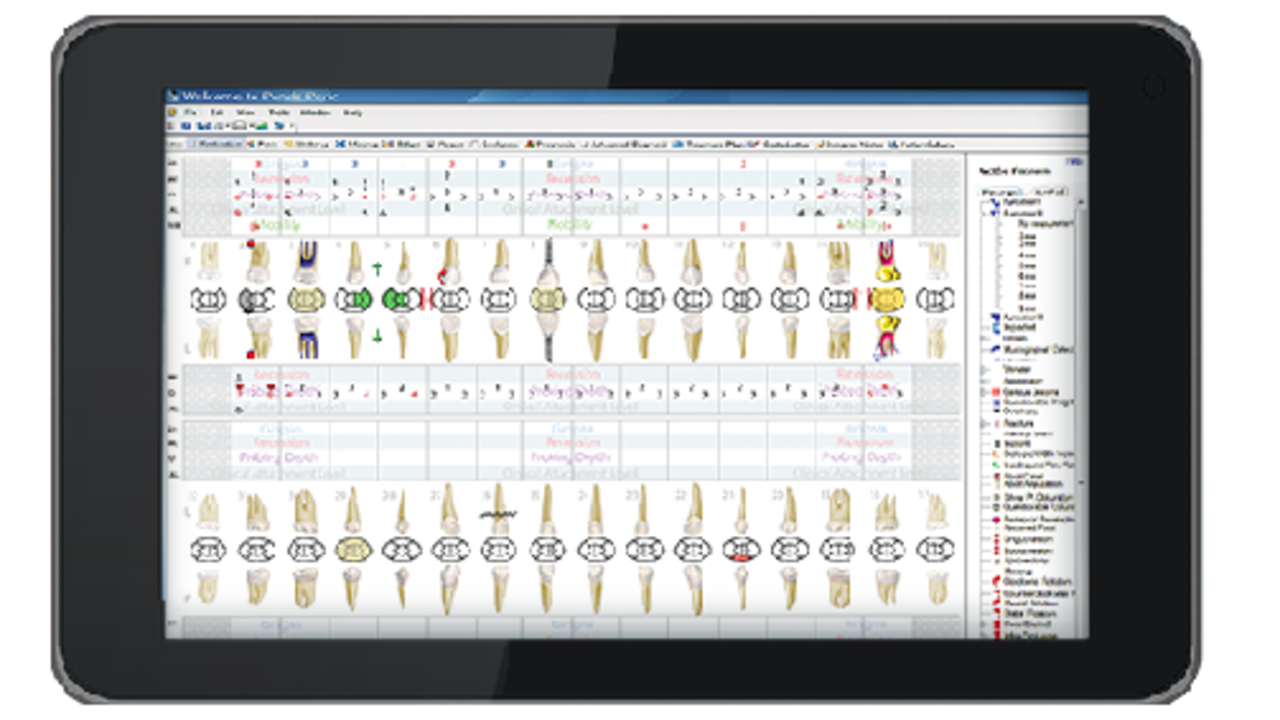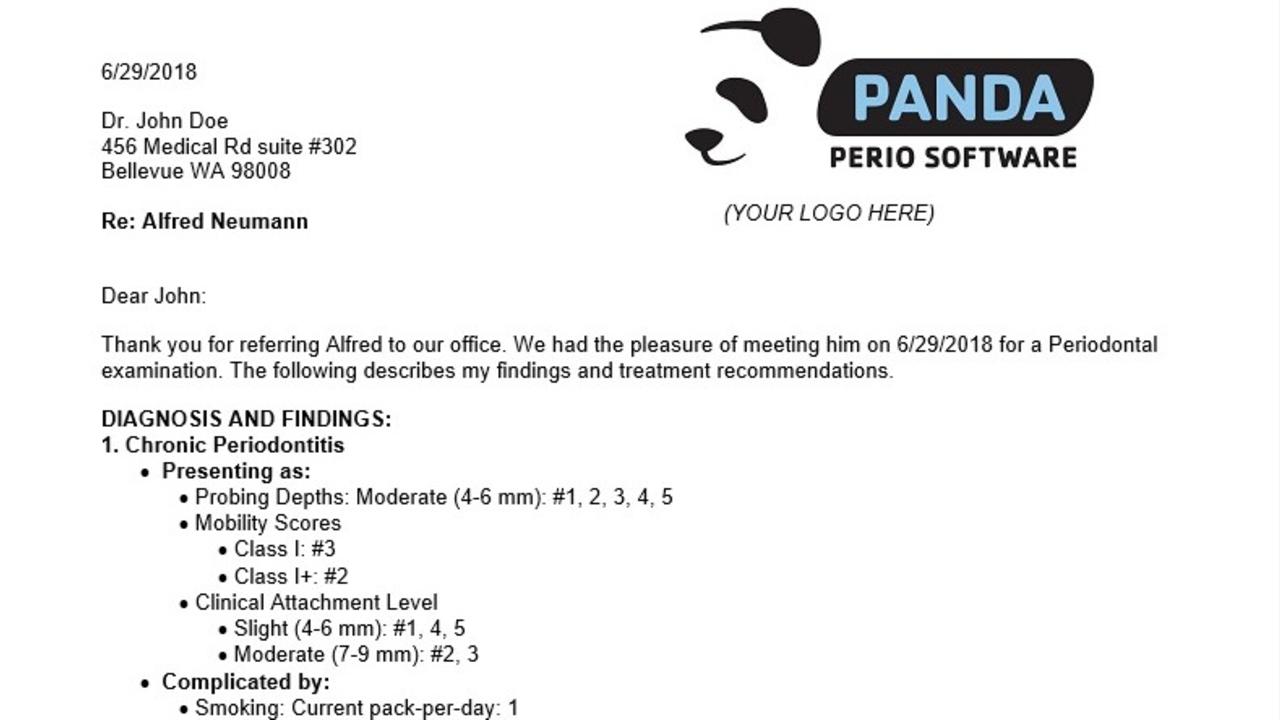PANDA Perio Comparison to Practice Management Software: The Difference Matters

Every periodontal practice uses some form of practice management software to better manage day to day tasks, such as scheduling, invoicing, and accounting. But is it enough to help you run a profitable practice?
Practice management software excels at providing front-end support to your team, but it fails to meet the needs of the Periodontist when it comes to electronic medical records and charting that can increase efficiency and profitability in the examining room.
In addition, traditional practice software lacks the ability to easily manage marketing-related tasks to referring practices. Maintaining strong connections with referring practices is critical to your success, but practice management software can strain these relationships by not providing sufficient information. Internal marketing is just as important: customizing patient education as opposed to canned brochures and hypotheticals can help patients take active involvement in their care. Providers need an easy way to p...
3 Common Mistakes That Negatively Impact Your Treatment Planning

Even after years of education and expertise, periodontists and their teams can still make mistakes during the treatment planning phase.
Small mistakes can often lead to bigger ones, which can ultimately affect the outcome of the treatment’s effectiveness. Let’s explore three of the most common errors of perio treatment planning and how you can avoid them.
#1 - Poor Communication with the Referring Doctor
If you rely on general practitioners for referrals, you have an obligation to communicate with each other concerning each patient’s needs. The reality is that many periodontists do not follow up in a timely manner or fail to foster ongoing communication.
When handoffs are shaky, it creates issues for both you and your patient. Not having the right information can create gaps in treatment planning. In addition, you could risk losing referral business from other doctors and your reputation may take a hit.
#2 - Lack of Detail Regarding the Treatment Plan
Many practitioners are att...
How to Streamline Periodontal Charting

If you could change one thing about the periodontal charting process, what would it be?
Speed up the data collection and entry process? Customize it to the way you want to work? Simplify the look and feel of charting?
We’ve heard a variety of answers to this very question, and they all relate to a key point: periodontal charting isn’t a quick and easy task - and it could be costing you more time, money, and resources than it should.
Why Better Periodontal Charting Is Needed
If you’ve tried to break away from traditional charting in favour of electronic record keeping, you’ve likely noticed that most solutions are made for general dentistry and not for the specialty of periodontics. It’s a major limitation on the data you’re able to collect, view, and analyze, which forces you to pursue other options to capture the details you need.
Visual elements play an equally important role in charting, but many traditional solutions don’t offer the big picture. Most products have a limited am...
How Periodontists Can Prepare Themselves for the 2017 World Workshop Changes on the Classification of Periodontal and Peri-Implant Diseases and Conditions

Are you aware of the new classifications of periodontal and peri-implant diseases and conditions?
The American Academy for Periodontology recently released several changes to periodontal diagnosis, and these changes will affect the patient services and care you provide.
AAP Changes in Periodontal Disease Diagnosis
The recent update to the classification for peri-implant disease and conditions is a comprehensive effort that periodontists haven’t seen the likes of in almost 20 years. All of the following have been affected, at least in part, by the recent restructuring:
- Acute periodontal conditions
- Endo-periodontal lesion
- Necrotizing gingivitis
- Necrotizing periodontitis
- Periodontal abscess
- Periodontal disease
- Periodontitis
- Periodontal classification
- Gingivitis
- Peri-implant mucositis
- Peri-implantitis
- Peri-implant tissues
- Case definition
- Hard tissue deficiencies
- Soft tissue deficiencies
As a result, periodontitis is no longer classified as chronic or aggressive, b...
The 2 Most Commonly Forgotten Components of Periodontal Diagnosis in the Practice

When you’re exploring diagnoses for a patient, you look for certain things, like probing depth, clinical attachment level, and bleeding on probing. The signs you identify lead you to a periodontal diagnosis, at which point you can explore treatment options.
But whatever steps you take to reach a diagnosis, there are two key components to the process that are often left unaddressed - and they’re both critical to your success and the eventual outcome for your patients:
#1 - A Systematized Approach to Diagnosis
Despite our growing understanding of periodontal diseases, traditional clinical parameters are largely responsible for an accurate and thorough diagnosis. Only then will you be able to provide the expected level of treatment and care to your patients.
However, the actual methods for diagnosis can vary between provider, even within the same practice. Many providers lack a systematized way of approaching diagnosis, in part because they can often make certain connections without...

